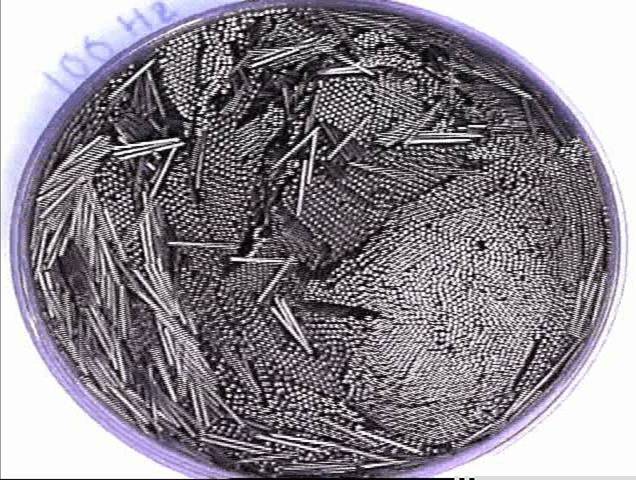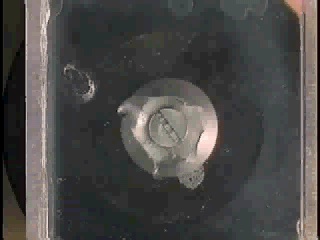Rodlike granular matter:

 |
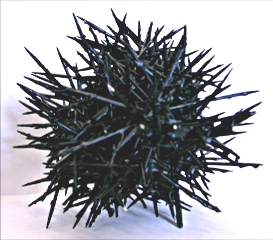 |
We study the coordination number and compactification of rods, as well as the formation of vortices in vibrated granular rods.
In any packing of granular material the coordination number, or number of touching neighbors per particle, is an important quantity because contacts between particles in a pile provide the necessary mechanical constraints to ensure a stable pile. Although the majority of granular studies concentrate on spheres, in Nature granular material is almost always aspherical, which motivated us to make the first measurements of the coordination number distribution for random packings of right cylindrical granular particles as a function of the rod length (L) to diameter (D), or aspect ratio, for both rods (L/D > 1) and disks (L/D < 1).
Donev et al. performed simulations of random packings of frictionless ellipsoids showing that <z> has a minimum for spheres (aspect ratio one) and increases continuously as spheres are deformed into either prolate or oblate ellipsoids from <z> ~ 6 for spheres to <z> ~ 10 for maximally jammed random packings of prolate or oblate ellipsoids at aspect ratios of approximately two and one-half, respectively.
These results contradict the isostatic conjecture arising from constraint and force balance arguments, which predict that <z> jumps discontinuously from <z> = 6 to <z> = 10 when frictionless spheres are infinitesimally deformed into ellipsoids. If the isostatic conjecture gives too high a value for the lower limit of <z>, then what is wrong with the conjecture? Donev et al. provide an example of ellipses which are locally jammed with fewer contacts than predicted in which the contact normals are correlated such that the normals intersect. A more complete explanation is that near spheres need only 2d neighbors to block translations and if the radii of curvature at the point of contact are flat enough then rotations are blocked as well. Thus Donev et al. predict for prolate ellipsoids that
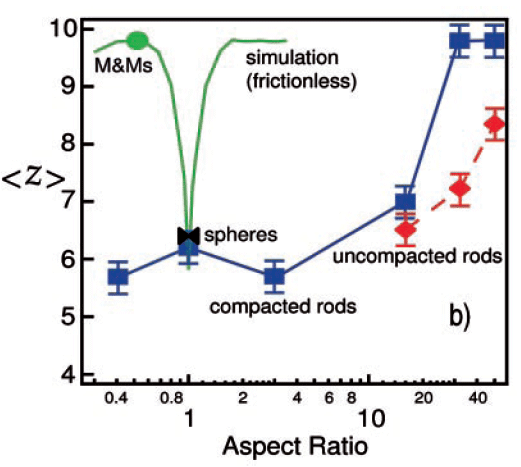
Presentations on compaction and coordination of granular rods. Chaikin - Lubensky Fest May, 2005 (pdf) Wesleyan Granular Workshop June, 2005 (ppt) Wesleyan Granular Workshoip June, 2005 (pdf) |
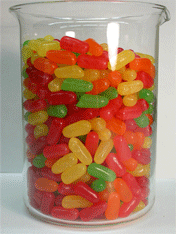 |

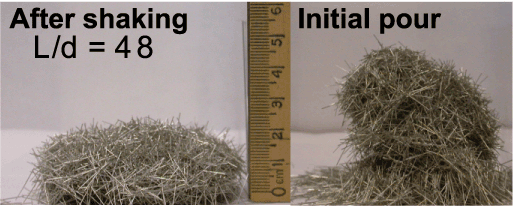
Rods are heaped into a cup and then poured out on the right, but on the left they are compacted first by shaking. The pile forms self-supporting body, but tenuously. If you pick up the compacted pile it holds its form (below). Note deformation of pile by variation of surface normal. Rods with L/D < 40 do not form self supporting plugs.
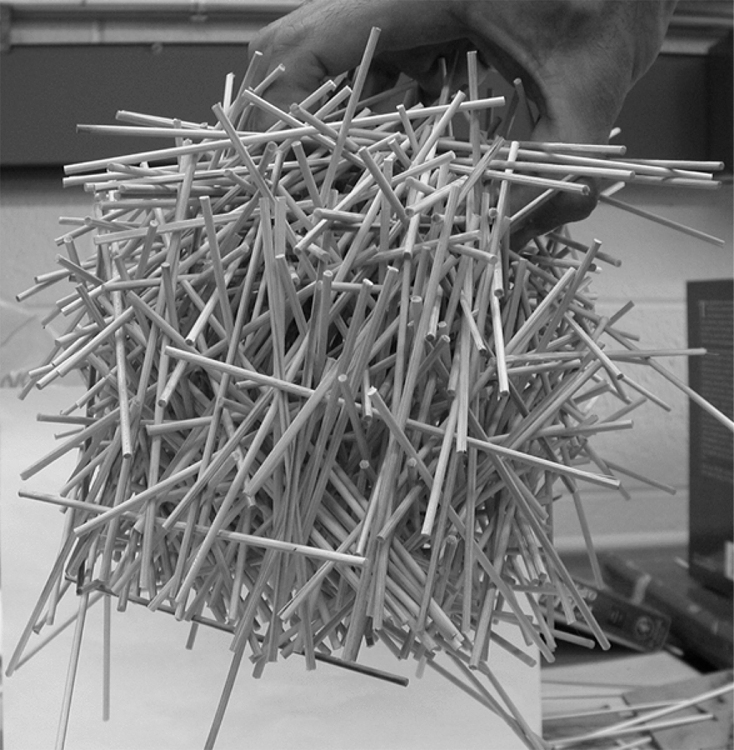 |
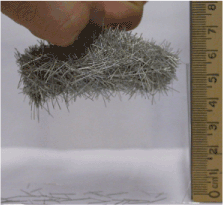 |

In 1998 we discovered that vertically vibrated rods of aspect ratio L/D = 12 and low volume fraction spontaneously stand up on their ends and organize into large rotating vortices. We gave our rods to the group of Arshad Kudrolli who followed up on this observation and reported their results in a remarkable paper. In the movies below, volume fraction is defined as the fraction of a monolayer of closed-packed rods aligned perpendicularly to the bottom of the container. So a volume fraction of one corresponds to a single closed packed layer of vertical rods.
A few minutes of vibration at 5 -7 g and 100 Hz causes the rods of L/D = 12 to stand up and form vortices. The movie is in real time with two 30 second cuts.
Vertically vibrated rods as a function of aspect ratio and volume fraction.

